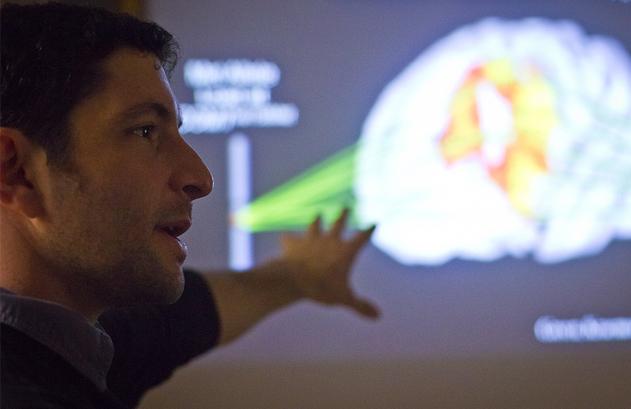Dr. Green Receives National Science Foundation Award

September 12, 2014 – Professor Adam Green will lead a 3-year project, to study learning of spatial relational reasoning skills by high school students, looking at neural measures as well as educational and behavioral outcomes. There is already considerable evidence linking spatial relational reasoning ability and future STEM (science, technology, engineering, and mathematics) attainment. The project will focus on a high school course, the Geospatial Semester, that is designed to promote STEM-relevant spatial thinking. The project will look for changes in patterns of brain activity and brain structure as a result of the course, as well as connections among the educational, behavioral, and neurological measures. This project will make substantial contributions to the development of educational neuroscience: this may be the first research that will measure how learning in a real world high school class changes the brain over time. Thus, this project will be positioned to bridge a critical gap between the cognitive neuroscience laboratory (where much has been learned by educational neuroscience) and the real world high school classroom (where the brain mechanisms of learning have gone largely unexplored). By obtaining physical evidence of how spatial learning changes the brain to support STEM thinking abilities, this project will be suited to catalyze the wider adoption of spatial approaches in STEM education. Prior research indicates that spatial training in the laboratory may reduce sex differences; this project will seek to measure this effect in real world high school spatial learning, and to identify neural mechanisms that help explain how and why the gender gap closes. This project will advance the work of the EHR (Education & Human Resources) Directorate in studying the cognitive and neural basis of STEM learning.
The over-arching goal of the project is to develop a mechanistic theory of change for spatial STEM education at the behavioral and neural levels. To achieve this goal, the project will measure a combination of outcomes: educational (e.g., coursework), behavioral (e.g., core spatial ability on standard tests of mental rotation and embedded figure identification, use of spatial language), and neural (e.g., neural efficiency and grey matter volume of brain regions that support spatial relational reasoning ability, interconnectivity networks across brain regions). Using these measures, the project will investigate key questions for developing a mechanistic theory of change (e.g. Which changes in core spatial abilities support better educational outcomes? Which neurological changes mediate the relationship between spatial learning and improved spatial thinking?). Students in the spatially-based Geospatial Semester will be compared to peers receiving standard (non-spatially-based) STEM education in other advanced science courses. Neurological measures will be obtained by functional and structural magnetic resonance imaging performed at pre- and post-test time points. In general, the project will address the issue of brain plasticity in a high school STEM education context. The project will use machine-learning techniques to discern neurological effects of spatial learning in both hypothesis-driven and data-driven ways, and examine sex differences in the effect of spatial STEM learning on cognition and the brain. Analyses will focus on relating changes across neural, behavioral, and educational levels toward an integrated understanding of the mechanisms that support spatial STEM learning.